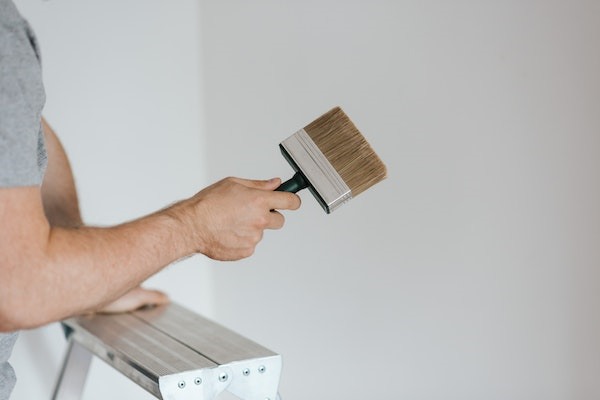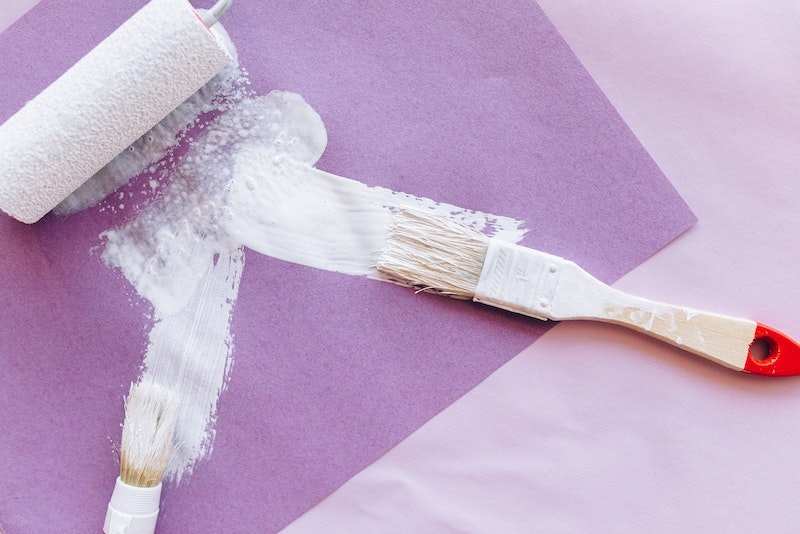There are different types of house paint, and when it comes to executing a new paint project, knowing where to begin can be formidable.
Paints can convert your house into a dream house. But how do you find the perfect paint for your home project? What would the complete finish look like? Do exteriors need a different type of paint? What are the different types of paints you can use?
This guide from Neighbourhood Painters in Vancouver will help you to know about different types of paint for house.
Let’s have a look at them.
Different Types of House Paint
- Primer Paint
- Oil-based and Water-based
- Enamel Paint
- Latex Paint
- Acrylic Paint
- Distemper Paint
- Emulsion Paint
- Whitewash
- Bituminous Paint
- Specialty Paints
1. Primer Paint
Primer Paint is not technically a type of paint; however, it is necessary for many painting projects and can be found in the paint aisle of your local hardware store. The first thing you apply is the primer. It ensures that your color is accurate and assists the paint in adhering to the surface. Oil-based or water-based primers are available. It is necessary to use the same primer base as your chosen paint.
2. Oil-based and Water-based Paint
If you notice the names, you’ll understand that the oil-based paints are made with oil and water-based ones are made with water. Water-based paints tend to be thinner, matte, and dry faster than oil-based paints, which typically have a longer drying time and are more durable.
Also, remember that removing oil-based paint requires harsh chemicals, whereas removing water-based paint requires only water.
3. Enamel Paint
Oil-based paints are sometimes called ‘enamel’ because of their durability. Trim around windows and doors is a common application for enamel paints, which are available in a variety of finishes, including gloss and semi-gloss. The biggest issue with enamel paint is that it happens to discolor over time.
4. Latex Paint
Despite the absence of any latex in the paint, the term “latex paint” refers to water-based paint.
5. Acrylic Paint
Acrylic paint is simply another name for water-based paint. Here, acrylic is being used as a binding agent. Acrylic paint comes in several varieties:
- Acrylic latex
- Acrylic enamel
- Acrylic latex enamel
Acrylic enamel paints are not a blend of oil- and water-based paints. The name has been given from the paint’s increased durability.
Always check the tin when purchasing acrylic paint, as the name does not necessarily mean the paint contains acrylic or latex.
6. Distemper Paint
Lime, water, chalk, glue, and pigment are all mixed up to make distemper paint. It is not as good as cement paints, but still better than a whitewash. It is a relatively inexpensive paint type for house and ideal for areas where durability and longevity are not significant considerations. It is majorly suitable for interiors, but you can also use it in a few exterior areas.
7. Emulsion Paint
Fast-drying, weather-resistant, long-lasting, odor-free, durable, alkali resistant, offers a superb texture, and retains color for extended periods — what’s not to like about emulsion paint? Not to be jumbled with acrylic emulsion, emulsion paints exhibit resistance to fungi and mildew, are easy to apply, and are available in various finishes. This type of paint is non-toxic and easy to clean. So if you have kids and pets at home, this can be a good choice.
8. Whitewash
Whitewash is what you get when you combine water-based paint with more water. The result is a thinner paint. This type of paint for homes is used to retain the texture and look of the painted surface. For instance, it looks excellent when used to paint porous surfaces like brick walls and wooden cabinets. The thin layer of paint allows some of the original color, texture, or grain of the painted surface to remain visible, adding a rustic vibe to the home.
9. Bituminous Paint
Some types of house paints perform a more functional role, and bituminous is one of them. It is waterproof and rust-and-weather resistant, so this paint adds a protective layer to surfaces. However, it is only suited for areas with a bit of sunlight.
10. Specialty Paint
The above types of house paints can have additives to give them a particular feature. Some include:
- Anti-mold or anti-mildew
- Fire retardants
- Anti-condensation
Bottomline
We hope you found this information helpful in choosing the right paint for your home! If you want your home to be just as beautiful, look no further.
You can Call Us [6044428179] for Vancouver residential painting. We use top-of-the-line paints, and our team knows how to combine their skills with the best materials.
Our experienced interior and exterior painting professionals proudly serve North Vancouver, West Vancouver, Richmond, Delta, and the surrounding areas! Get a Free Estimate Quote from us TODAY.



